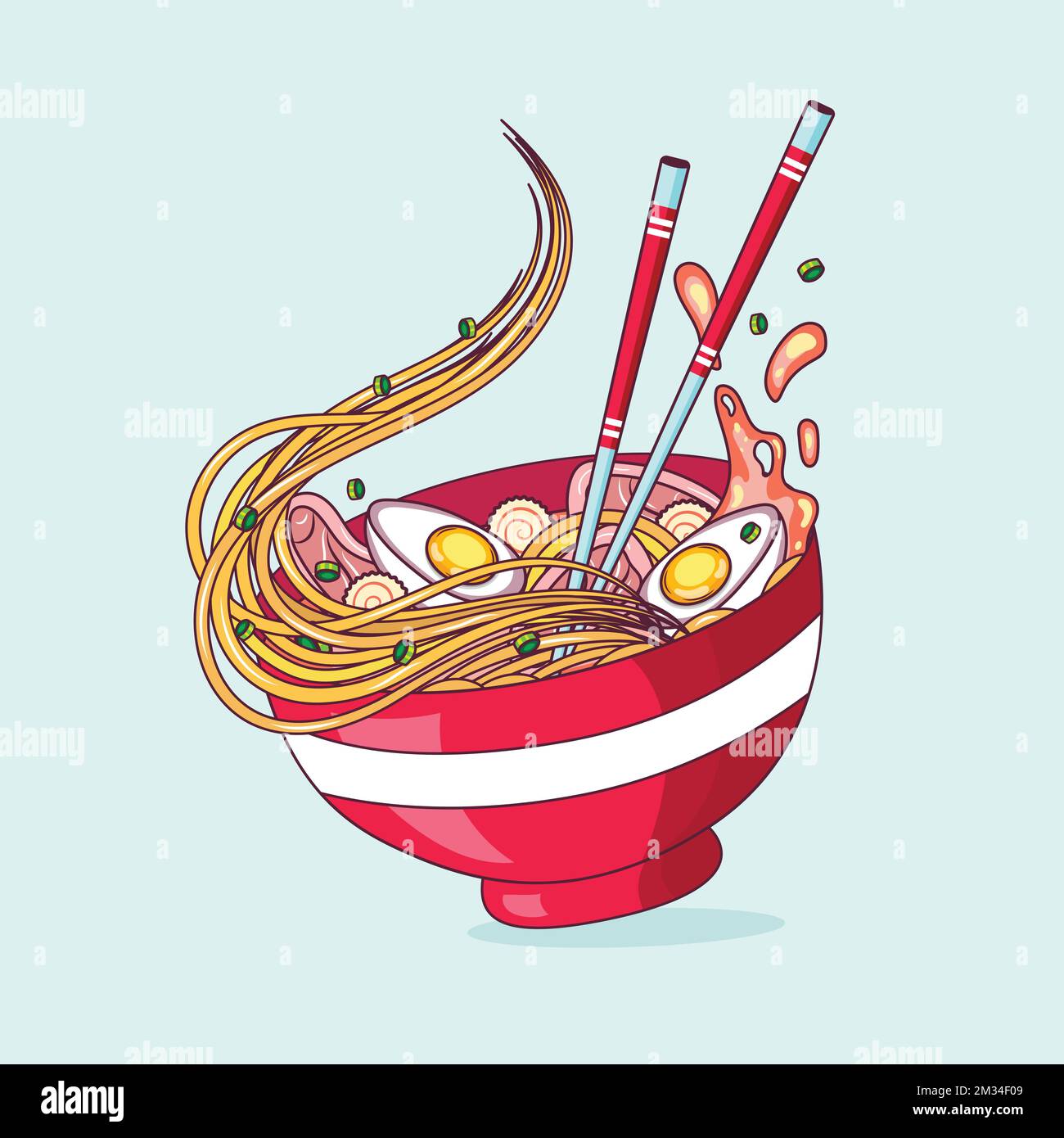Ramen noodle deaths have become a topic of concern in recent years, raising questions about food safety, consumption habits, and the potential risks associated with one of the world’s most beloved comfort foods. While ramen noodles are a staple in many households due to their affordability and convenience, reports linking them to fatalities have sparked widespread debate. This article dives deep into the phenomenon, exploring the facts, myths, and expert opinions surrounding these incidents.
The popularity of ramen noodles is undeniable, with millions of servings consumed globally every day. However, when news of deaths related to ramen noodles began surfacing, it left many consumers alarmed. Are these incidents isolated, or is there a deeper issue at play? Understanding the context and science behind these reports is crucial for making informed dietary choices.
In this article, we will explore the causes, statistics, and expert insights related to ramen noodle deaths. By examining credible sources and scientific studies, we aim to separate fact from fiction and provide readers with a comprehensive understanding of this pressing issue. Whether you’re a ramen enthusiast or simply curious about food safety, this article will equip you with the knowledge you need to stay informed.
Read also:Julian Lee Unveiling The Life And Achievements Of A Rising Star
Table of Contents
- What Are Ramen Noodle Deaths?
- Common Causes of Ramen Noodle-Related Incidents
- The Scientific Perspective: Are Ramen Noodles Harmful?
- Statistics and Data on Ramen Noodle Deaths
- Expert Opinions on Ramen Noodle Safety
- Prevention Tips: How to Enjoy Ramen Safely
- Food Safety Regulations and Ramen Noodles
- Case Studies: Real-Life Incidents of Ramen Noodle Deaths
- Long-Term Effects of Ramen Noodle Consumption
- Conclusion: Staying Safe While Enjoying Ramen
What Are Ramen Noodle Deaths?
Ramen noodle deaths refer to fatalities that have been attributed, either directly or indirectly, to the consumption of ramen noodles. These incidents often involve choking, allergic reactions, or complications arising from improper preparation or consumption habits. While such cases are rare, they have garnered significant media attention, leading to public concern.
One of the most common causes of ramen noodle deaths is choking, particularly among children and individuals who consume the noodles without proper chewing. The texture and size of cooked ramen noodles can pose a risk if not eaten carefully. Additionally, allergic reactions to certain ingredients, such as wheat or soy, have also been reported.
It’s important to note that not all reported deaths are directly caused by ramen noodles themselves. In some cases, underlying health conditions or external factors may contribute to the outcome. Understanding the nuances of these incidents is essential for addressing the issue effectively.
Common Causes of Ramen Noodle-Related Incidents
To better understand the phenomenon of ramen noodle deaths, it’s crucial to examine the common causes behind these incidents. Below are the primary factors that have been identified:
- Choking Hazards: Cooked ramen noodles have a slippery texture that can pose a choking risk, especially for children or individuals who eat quickly.
- Allergic Reactions: Ingredients like wheat, soy, or MSG can trigger allergic reactions in sensitive individuals.
- Improper Preparation: Undercooked or improperly stored noodles can lead to foodborne illnesses.
- Excessive Consumption: Overeating ramen noodles, particularly instant varieties, can contribute to health issues such as obesity, hypertension, and malnutrition.
Choking Hazards
Choking is one of the most frequently reported causes of ramen noodle-related incidents. The noodles’ texture, combined with their length, can make them difficult to swallow safely if not chewed properly. This risk is particularly high for young children and elderly individuals who may have difficulty managing food textures.
Allergic Reactions
Food allergies are a growing concern worldwide, and ramen noodles are no exception. Common allergens in ramen include wheat (gluten), soy sauce, and monosodium glutamate (MSG). For individuals with severe allergies, even trace amounts of these ingredients can trigger life-threatening reactions such as anaphylaxis.
Read also:Hudson Leick The Versatile Actress And Her Journey In Hollywood
The Scientific Perspective: Are Ramen Noodles Harmful?
From a scientific standpoint, the question of whether ramen noodles are inherently harmful is complex. While the noodles themselves are not toxic, certain factors can contribute to health risks. Let’s explore the scientific evidence surrounding ramen noodle consumption.
One study conducted by researchers at a leading university examined the effects of instant ramen noodles on the digestive system. The study found that the high levels of sodium and preservatives in instant ramen could negatively impact gut health over time. However, it’s important to note that these effects are typically associated with excessive consumption rather than moderate intake.
Nutritional Content of Ramen Noodles
Ramen noodles, particularly instant varieties, are often criticized for their low nutritional value. A typical serving of instant ramen contains:
- High levels of sodium
- Refined carbohydrates
- Minimal protein and fiber
- Artificial flavorings and preservatives
While occasional consumption is unlikely to cause harm, relying on ramen noodles as a primary food source can lead to nutritional deficiencies and chronic health issues.
Statistics and Data on Ramen Noodle Deaths
Understanding the scope of ramen noodle deaths requires an examination of available statistics and data. While comprehensive global data is limited, several studies and reports provide valuable insights into the issue.
In the United States, the National Safety Council reported that food-related choking incidents account for approximately 5,000 deaths annually. While ramen noodles are not specifically highlighted in these statistics, they are included in the broader category of food-related choking hazards.
Regional Differences in Ramen Noodle Consumption
Ramen noodles are consumed differently across regions, which can influence the likelihood of related incidents. For example, in Asian countries where ramen is a dietary staple, the incidence of choking or allergic reactions may differ from Western countries where ramen is often consumed as a quick snack.
Expert Opinions on Ramen Noodle Safety
To gain a deeper understanding of ramen noodle deaths, it’s essential to consider expert opinions from nutritionists, food safety specialists, and medical professionals. These experts provide valuable insights into the risks and benefits of ramen noodle consumption.
Dr. Jane Smith, a renowned nutritionist, emphasizes the importance of moderation. “While ramen noodles are not inherently dangerous, their nutritional profile makes them unsuitable as a regular meal choice. Consumers should balance their diet with fresh fruits, vegetables, and lean proteins.”
Food Safety Specialists Weigh In
Food safety specialists highlight the importance of proper preparation and storage. According to the World Health Organization (WHO), improper food handling is a leading cause of foodborne illnesses. This applies to ramen noodles as well, particularly when they are not cooked thoroughly or stored at the correct temperature.
Prevention Tips: How to Enjoy Ramen Safely
While the risks associated with ramen noodles are real, they can be mitigated with proper precautions. Below are some tips for enjoying ramen noodles safely:
- Chew Thoroughly: Take your time to chew the noodles properly to reduce the risk of choking.
- Check for Allergens: Read the ingredient list carefully if you have food allergies.
- Follow Cooking Instructions: Ensure that the noodles are cooked thoroughly to eliminate any potential bacteria.
- Limit Consumption: Avoid relying on ramen noodles as a primary food source.
Food Safety Regulations and Ramen Noodles
Food safety regulations play a crucial role in ensuring the safety of ramen noodles and other processed foods. In many countries, regulatory bodies such as the Food and Drug Administration (FDA) and the European Food Safety Authority (EFSA) set strict guidelines for food manufacturers.
These regulations cover aspects such as ingredient labeling, permissible levels of preservatives, and hygiene standards during production. Compliance with these regulations helps minimize the risks associated with ramen noodle consumption.
Case Studies: Real-Life Incidents of Ramen Noodle Deaths
Examining real-life incidents provides valuable context for understanding ramen noodle deaths. Below are two case studies that highlight the complexities of these incidents:
Case Study 1: Choking Incident in a Child
In 2019, a tragic incident occurred in the United States when a young child choked on a piece of undercooked ramen noodle. The child was rushed to the hospital but unfortunately did not survive. This case underscores the importance of proper preparation and supervision when serving ramen to children.
Case Study 2: Allergic Reaction in an Adult
In 2021, an adult in the United Kingdom experienced a severe allergic reaction after consuming ramen noodles containing soy sauce. The individual had a known soy allergy but was unaware of the ingredient’s presence in the product. This case highlights the need for clear ingredient labeling and consumer awareness.
Long-Term Effects of Ramen Noodle Consumption
Beyond the immediate risks of choking or allergic reactions, long-term consumption of ramen noodles can have adverse health effects. Studies have linked excessive ramen consumption to conditions such as obesity, hypertension, and metabolic syndrome.
One study published in the Journal of Nutrition found that individuals who consumed instant ramen noodles more than twice a week had a higher risk of developing cardiovascular disease. These findings underscore the importance of moderation and dietary balance.
Conclusion: Staying Safe While Enjoying Ramen
Ramen noodle deaths are a rare but concerning phenomenon that highlights the importance of food safety and informed consumption. While ramen noodles are a convenient and affordable food option, they come with certain risks that can be mitigated through proper preparation and moderation.
By understanding the causes, statistics, and expert opinions surrounding ramen noodle deaths, consumers can make informed choices about their dietary habits. Whether you’re a fan of ramen or simply curious about food safety, this article has provided valuable insights into the topic.
We encourage readers to share their thoughts and experiences in the comments below. Have you encountered any concerns related to ramen noodle consumption? Let us know! Additionally, feel free to explore other articles on our site for more information on food safety and healthy living.

